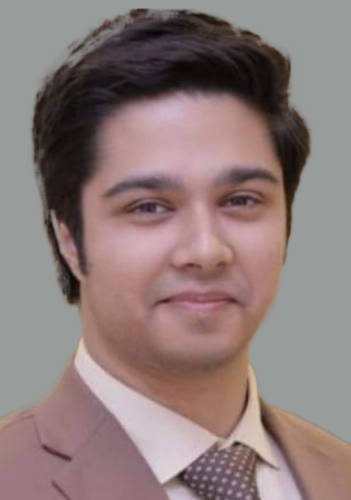Osama Siddiqui
Stories of Pakistan People’s Party’s (PPP) have been told as the party was closely connected to the lives of people. The supporters of the party known as Jiyalas affectionately referred to the party as PPP or PP. It was one of the most attractive political parties for the youth as its outstanding leadership always represented them.
PPP was established in 1967 at the house of Dr Mubashar Hassan in Lahore to fight the dictator, General Ayub Khan. The party was founded on socialist principles. PPP was led by Zulfiqar Ali Bhutto, who was an Oxford University graduate and a passionate socialist who inspired the emotions of people with his speeches. Many senior citizens who are still connected with PPP talk about how charismatic and charming Bhutto was as a leader. Most of them remember his powerful speech at the UN. Although it could be called a populist move, Pakistanis were longing for a leader who was as emotional as they were, and they found that in Bhutto. His passionate and emotional speeches touched the people’s hearts. What many people don’t mention, or mention less, is that PPP’s top leaders were very intelligent and politically skilled.
I talked less about Bhutto in the above paragraphs, because, I have already written about him before. So, he does not need an introduction since a lot has been written about him, and he is still one of the most talked-about political leaders in Pakistan.
Jalaluddin Abul Rahim, a philosopher and former bureaucrat, was the mastermind of the ideology of PPP and he was also its key strategist. Initially, he was Bhutto’s closest advisor, but their relationship ended later on. One evening, when Bhutto was late for dinner, Rahim remarked that he would no longer wait for the ‘Maharaja of Larkana’. That night, the Federal Security Forces (FSF) forcibly entered Rahim’s house and severely beat him, marking the end of their political bond.
Mustafa Khar was highly favored within PPP. As he came from a feudal background, therefore, Bhutto trusted him deeply and considered him like a younger brother. Khar gained significant popularity in Punjab, but outside of PPP, his political career was not very successful when he became a part of other political parties. Bhutto saw Khar and Mairaj as the successors to PPP, and he looked at one as the parliamentary figure and the other as the revolutionary face for the party.
Mumtaz Ali Khan Bhutto was another strong figure whom Bhutto considered his talented cousin. Mumtaz came from a more senior family background in the feudal setup compared to Zulfiqar Ali Bhutto’s family. Mumtaz was educated at the Oxford University just like Zulfiqar. Bhutto relied heavily on Mumtaz, especially regarding the matters in Sindh. However, later on, Bhutto’s mind was poisoned with the belief that Mumtaz was planning to kill him. This deeply shook Mumtaz, as he couldn’t understand how Bhutto, whom he admired as a hero since their Oxford days, could believe such a story. One of Mumtaz’s professors at Oxford had predicted that his cousin would achieve great things in life.
However, my favorite stalwarts of PPP were Mairaj Muhammad Khan and Dr Mubashar Hassan. Mairaj Muhammad Khan was the leader of the left-wing student union at Karachi University. Known for his powerful speeches, he gained wide acceptance among the audience. He hailed from an Urdu-speaking middle-class family of Pashtun descent. Mairaj had a falling out with Bhutto during his tenure as labor minister when police fired on protesters. Despite resigning in protest, the leftist leader was unjustly imprisoned. Following Bhutto’s execution, Mairaj was among the first to visit his family and offer condolences. He will always be remembered as a man of principles.
Dr Mubashar Hassan came from an Urdu-speaking family that settled in Lahore after partition. He earned his PhD from Iowa University and became a professor at the prestigious University of Engineering and Technology (UET), Lahore. PPP’s birth took place at his house. He later served as finance minister in PPP’s first government. He was criticized for nationalizing industries. He defended PPP’s manifesto and stated that nationalization was a necessary step that PPP had to take upon coming to power. He had always been known for his gentle demeanor, and I had the pleasure of meeting him at Faiz Festival, where he displayed exceptional politeness. He is the author of famous book ‘The Mirage of Power’. It is said that he resigned from parliament when Bhutto sided more with right-wing forces, which was an act that he could not support.
Bhutto had forgotten that it was the progressive forces that brought him into parliament. Hayat Khan Sherpao was another dedicated supporter of PPP from Khyber Pakhtunkhwa. Sherpao came from a Muslim League background before partition. He was appointed as the governor of KP when PPP came into power. He bravely contested against the National Awami Party (NAP) in electoral politics and he was called as the lion of Pakhtunkhwa. Unfortunately, he was killed in a bomb blast during a function at the University of Peshawar. Bhutto blamed the entire leadership of NAP for the incident which led to their arrest and imprisonment.
This was perhaps the best political team Pakistan had ever seen. Bhutto’s PPP was consisted of intellectuals, feudalists, leftists, and right-wing thinkers. However, the team could not deliver to the best of its abilities. Unfortunately, Bhutto started to disagree with the founding members of PPP, and it is a fact that PPP was led by Bhutto’s charisma but one cannot forget that behind the party there was J. A. Rahim’s intellect, Mubashar Hassan’s dedication, Mustafa Khar and Mumtaz Bhutto’s brotherhood, Mairaj Muhammad Khan’s resilience and Hayat Sherpao’s loyalty. In my view, Pakistan may never witness such a multi-talented party again.
The writer attended Cardiff University and completed his Masters of Science in Business Management. He has great passion for modern South Asian history, politics, political marketing, and films. He may be reached at: osamasiddiqui21@yahoo.com. He tweets @osamasidd97.
Related Posts






Comments